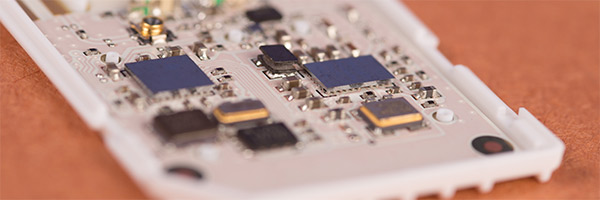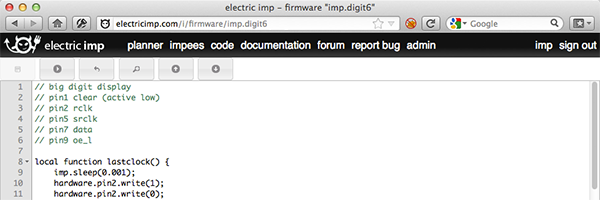 Electric Imp is a device in an SD card form factor that aims at providing Wi-Fi connectivity to household appliances at low cost and bringing the Internet of Things (IoT) closer to reality. The Imp will also connect to a Cloud service handled by the company (which is also called Electric Imp). The device Wi-Fi connection can easily be configured using an iOS or Android smartphone thanks to BlinkUp, a patent-pending scheme supporting WEP, WPA and WPA2 encryption schemes as well as WPS setup.
Electric Imp is a device in an SD card form factor that aims at providing Wi-Fi connectivity to household appliances at low cost and bringing the Internet of Things (IoT) closer to reality. The Imp will also connect to a Cloud service handled by the company (which is also called Electric Imp). The device Wi-Fi connection can easily be configured using an iOS or Android smartphone thanks to BlinkUp, a patent-pending scheme supporting WEP, WPA and WPA2 encryption schemes as well as WPS setup.
Electric Imp developers expect this device to save resources (e.g. electricity) by taking into account environmental conditions (e.g. occupancy, temperature..), improve security & safety and overall provide better monitoring and control of devices. For example, this could enable support services to remotely diagnose a device, and provide timely customer support.

Here are the Electric Imp hardware specifications:
- ST Micro STM32 Cortex M3 MCU
- 802.11b/g/n WiFi
- 6 software configurable GPIOs with support for UART, I2C, SPI, analog in and out, PWM, etc…
- Power Consumption
- Sleep Mode: 6uA
- Wi-Fi (idle): 10 mA
- Wi-Fi (active transmission): 250 mA
- Dimensions – 32mm x 24mm x 2.1mm
Software development is entirely done in a browser-based IDE (no SDK here) using Squirrel, a language similar to C/JavaScript. The code is then directly built an run in the Imp, and you can debug it with log messages sent back to the browser.

Packets to/from the Imp are encrypted with TLS and an open API on the server allows devices to send feedback or be controlled via email, SMS, twitter, web pages…
The Imp behavior can be defined with the Planner, which is also part of this browser-based IDE, where you’ll be able to define timers, compare measurements, send events via twitter/SMS etc… The company plans to have an Electric Imp app store, where complex behaviors can be freely downloaded or purchased and imported into the planner.

Three development kits for the Imp will be available:
- April for basic prototyping (7 USD) – This kit will include a socket, an ID chip, and a power supply.
- Hannah for hobbyists (25 USD) – This kit comes with a rotary knob, two push buttons, an RGB light sensor, a temperature sensor, a 3-axis accelerometer, a hall sensor, an RGB LED, two servo outputs, 5 spare GPIOs and an I2C bus.
- Duino for Arduino users (20 USD) – This board based on ATMEGA328 MCU is compatible with Arduino Uno, but has an Imp socket instead of a USB to serial port. A modified version of the Arduino IDE is used to update the ATMEGA code. The ATMEGA can also operate in standalone mode when no imp card is inserted.
Electric Imp will retail for 25 USD and manufacturers should be able to buy the card in bulk for as low as 1 USD/pc at a discount and add an “imp slot” to their devices for less than 1 USD. Developer preview Imps and the developer kits will be available in June or July 2012 and the company expects vendors to sell Imp-enabled products later in 2012. For further detail, you can check out Electrip Imp page.

Jean-Luc started CNX Software in 2010 as a part-time endeavor, before quitting his job as a software engineering manager, and starting to write daily news, and reviews full time later in 2011.
Support CNX Software! Donate via cryptocurrencies, become a Patron on Patreon, or purchase goods on Amazon or Aliexpress




